The Hidden Culprit of High Blood Pressure: It’s Not Salt, It’s Arterial Calcification
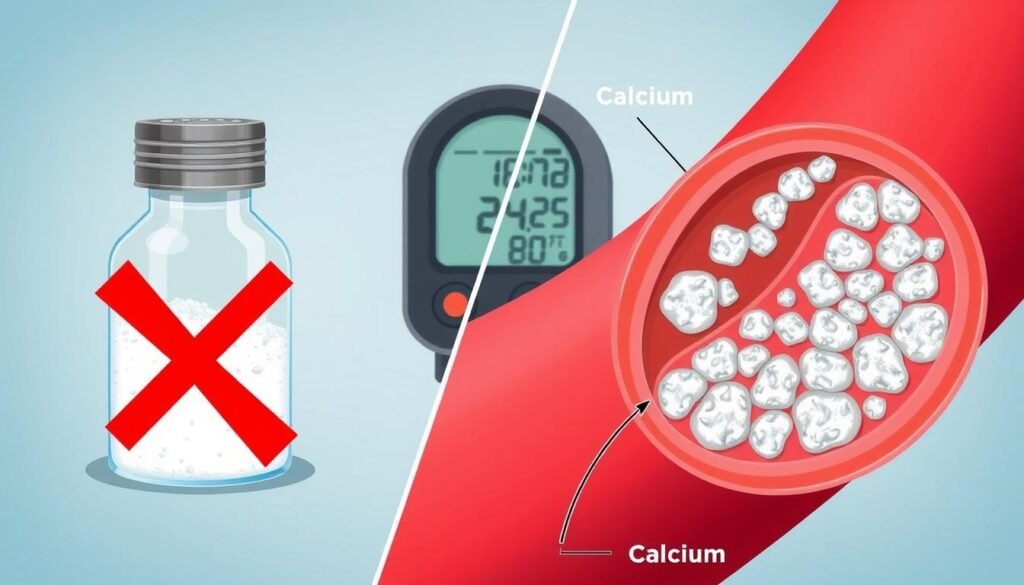
For decades, we’ve been told that excessive salt intake is the primary villain behind high blood pressure. This belief has shaped dietary guidelines and treatment approaches worldwide. But what if this fundamental understanding is flawed? Recent discoveries suggest that the true culprit might be hiding in plain sight: arterial calcification, a condition where calcium deposits gradually transform your flexible arteries into rigid, stone-like structures.
This revelation has shocked even experienced cardiologists and challenges everything we thought we knew about hypertension. As we explore this groundbreaking perspective, you’ll discover why traditional approaches often fail and what you can do to protect your cardiovascular system from this silent threat.
Debunking Common Hypertension Myths
Common myths about hypertension causes versus the reality of arterial calcification
Myth 1: Excessive Salt Intake Is the Main Culprit
For generations, medical professionals have pointed to salt as the primary dietary villain behind high blood pressure. This belief has led to countless low-sodium diets and salt-free food products. However, recent research suggests this connection may be overstated for many people.
While some individuals are salt-sensitive, many people with normal kidney function can process reasonable amounts of salt without significant blood pressure increases. The truth is that salt restriction alone often fails to normalize blood pressure in many hypertensive patients, suggesting other factors are at play.
Myth 2: Bacon and Red Meat Are the Primary Offenders
Another common belief is that bacon, red meat, and other animal products are major contributors to high blood pressure. While processed meats do contain compounds that may affect cardiovascular health, they’re not the root cause of hypertension for most people.
The fixation on these foods has diverted attention from a more fundamental process occurring within our arteries. This misdirection has left millions treating symptoms while the underlying condition progresses unnoticed.
The True Cause: Arterial Calcification
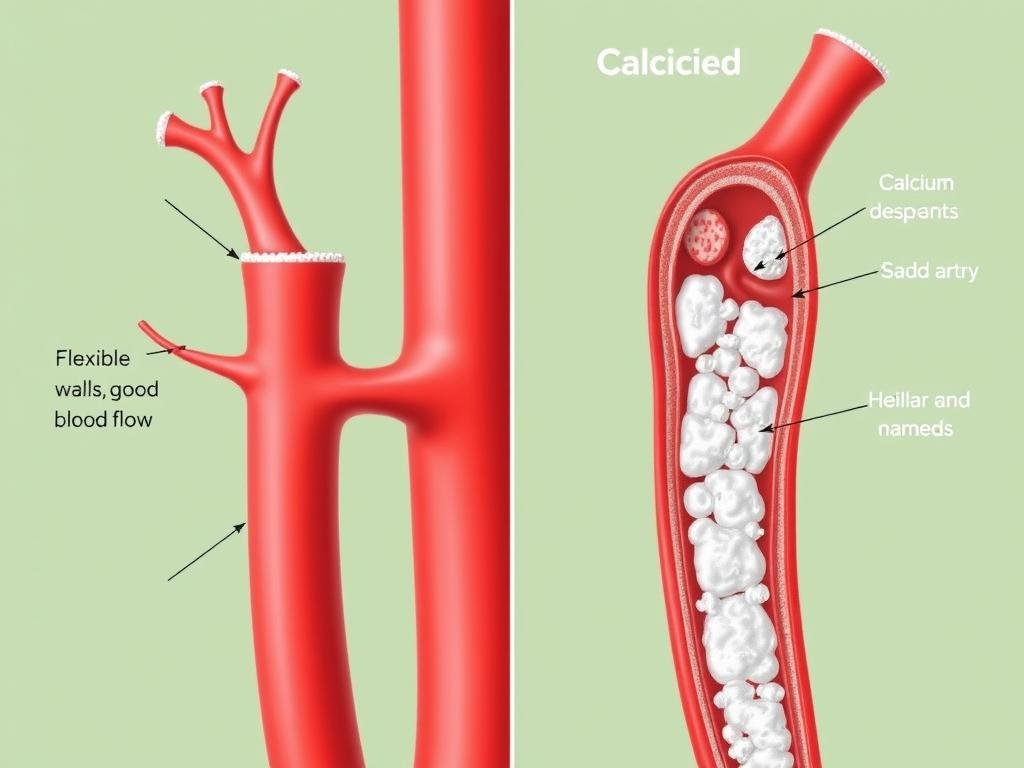
Comparison between healthy flexible artery and one affected by arterial calcification
Understanding Calcium Accumulation in Arteries
Arterial calcification occurs when calcium deposits build up in your arterial walls. Unlike the beneficial calcium that strengthens your bones, this misplaced calcium creates rigid structures within blood vessels that should remain flexible and elastic.
This process transforms your once-supple arteries into what medical professionals describe as “stone-like” conduits. The medical term for this condition is Coronary Artery Calcification, sometimes referred to as “Stone Heart Syndrome” (Síndrome del corazón de piedra).
A Recent Discovery That Shocked Cardiologists
A groundbreaking discovery by a prominent lipidologist has revealed that arterial calcification plays a much more significant role in hypertension than previously thought. This finding surprised even top cardiologists who had long focused on cholesterol and sodium as the primary factors.
The research shows that as calcium accumulates in arterial walls, it fundamentally changes their structure and function. Unlike soft plaque that can be addressed through traditional cholesterol-lowering approaches, calcified arteries present a different challenge entirely.
“What makes arterial calcification particularly dangerous is that it’s not just blocking blood flow like traditional plaque—it’s actually changing the physical properties of the arteries themselves, making them less able to expand and contract with each heartbeat.”
The Silent Progression of Arterial Calcification
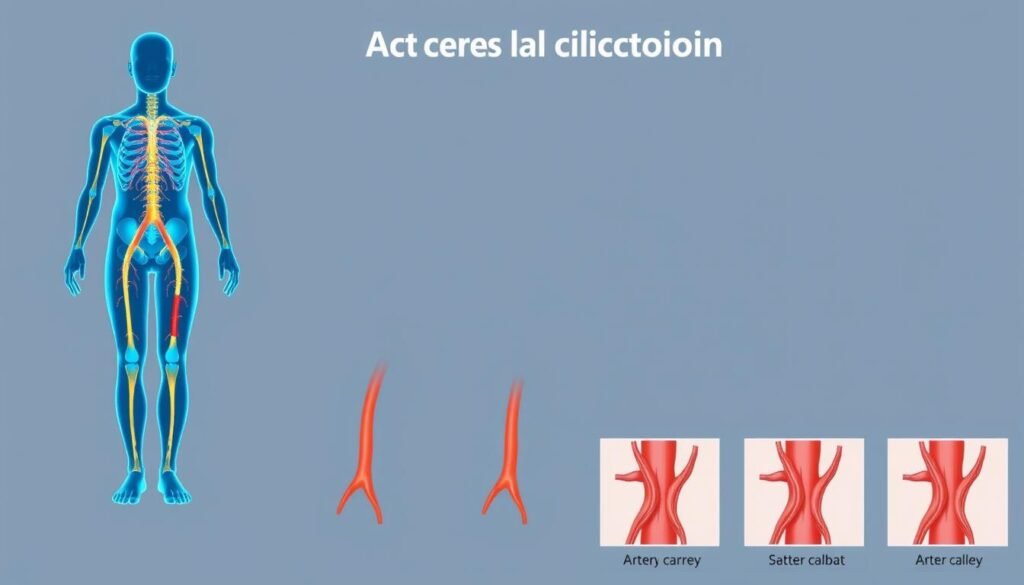
The silent progression of arterial calcification from the lower extremities upward
It Begins in the Feet and Advances Upward
Contrary to what many believe, arterial calcification doesn’t begin in the heart or brain. It typically starts in the feet and lower extremities, gradually advancing upward through the vascular system. This pattern explains why many people experience circulation problems in their legs and feet before developing more serious cardiovascular issues.
The process is remarkably slow and silent. You won’t feel calcium depositing in your arterial walls. There’s no pain or discomfort in the early stages, allowing the condition to progress for years or even decades without detection.
Prevalence: A Common But Unrecognized Problem
Studies show that by age 70, approximately 90% of men have some degree of arterial calcification. Women tend to develop it later due to hormonal protection, but after menopause, they quickly catch up. This makes arterial calcification one of the most common cardiovascular conditions—yet it remains largely unrecognized by the general public.
How Healthy Arteries Should Function vs. Reality
Healthy Arteries
- Flexible and elastic walls that expand and contract
- Smooth inner lining allowing efficient blood flow
- Responsive to the body’s changing needs
- Able to dilate to increase blood flow when needed
Calcified Arteries
- Rigid, hardened walls that resist movement
- Narrowed passages restricting blood flow
- Reduced ability to respond to changing demands
- Similar to clogged, inflexible iron pipes
The Heart’s Struggle: Asphyxia for Your Cardiovascular System
When arteries become calcified, your heart must work significantly harder to push blood through narrowed, rigid passages. This increased workload is similar to trying to push water through a partially clogged pipe—it requires more pressure and puts strain on the entire system.
Medical experts describe this condition as creating a form of “asphyxia” for the heart. The heart muscle itself receives less oxygen while simultaneously being forced to work harder, creating a dangerous cycle that can eventually lead to heart failure.
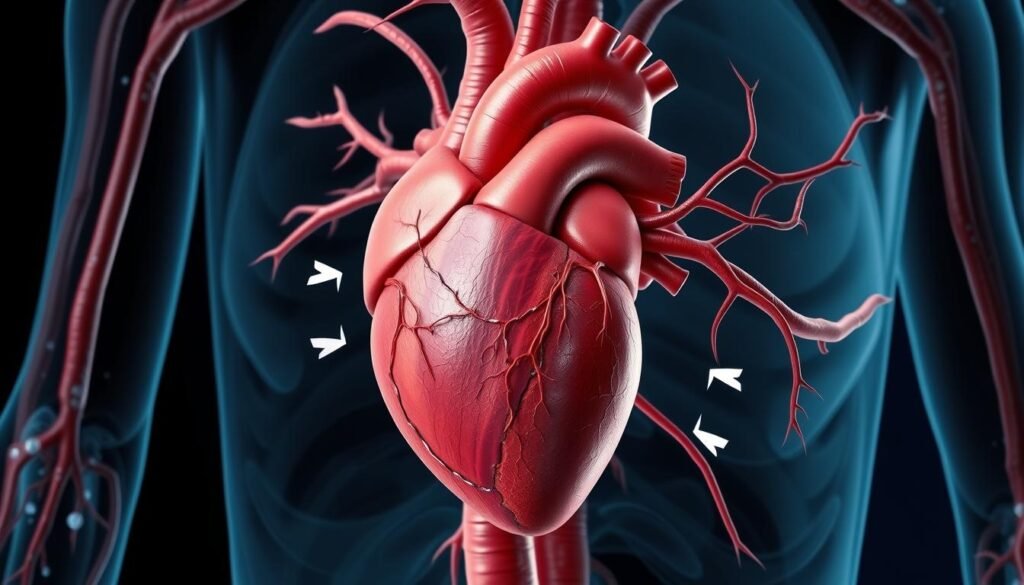
The heart must work harder to pump blood through calcified, narrowed arteries
Late Detection: When Symptoms Finally Appear
Most people only discover they have arterial calcification when it has already caused significant damage. By the time symptoms like chest pain, shortness of breath, or decreased exercise tolerance appear, the calcification process has typically been underway for years.
At this advanced stage, the heart is already fighting for survival, working overtime to push blood through increasingly rigid and narrow vessels. This explains why many heart attacks seem to occur “suddenly” in people who appeared healthy—the underlying condition had been developing silently for decades.
Limitations of Traditional Methods
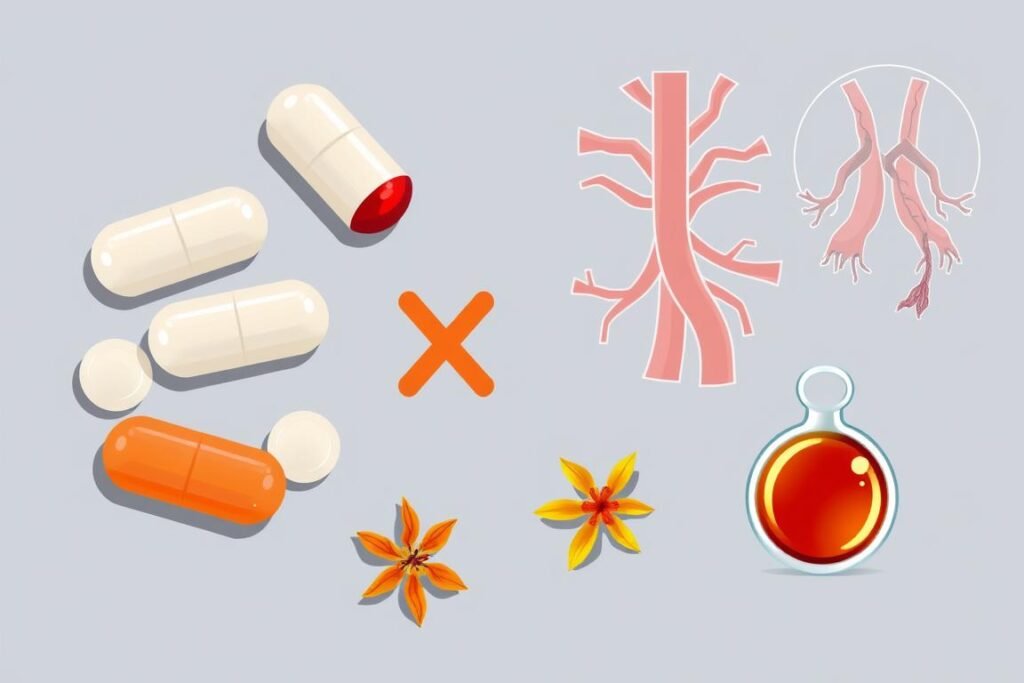
Traditional approaches often fail to address the root cause of arterial calcification
Why Conventional Approaches Fall Short
Traditional methods for treating high blood pressure primarily focus on symptoms rather than addressing arterial calcification. Blood pressure medications can force your numbers down temporarily, but they don’t reverse the underlying calcification process.
Standard approaches like sodium restriction, weight loss, and even some medications may help manage symptoms, but research shows they have limited impact on already-calcified arteries. This explains why many people require increasingly higher doses of blood pressure medications as they age.
The most alarming reality: Once arterial calcification has developed, conventional methods alone cannot reverse it. This limitation has driven researchers to explore alternative approaches that might address the root cause rather than just managing symptoms.
Natural Alternatives: The Saffron Solution

Saffron has been valued for centuries for its medicinal properties
Saffron: A Time-Tested Superfood
In the search for effective approaches to arterial health, many researchers have turned to traditional remedies with long histories of use. Saffron stands out among these natural alternatives. This precious spice has been valued across cultures for thousands of years, not just for its distinctive flavor but for its remarkable health properties.
Derived from the Crocus sativus flower, saffron contains unique compounds including crocin, crocetin, and safranal. These bioactive components have been studied for their potential cardiovascular benefits, including their ability to support healthy blood vessels.
The Science Behind Saffron’s Benefits
Modern research has begun to validate what traditional medicine has claimed for centuries. Studies suggest that saffron’s active compounds may help:
- Support healthy blood vessel function and elasticity
- Promote balanced inflammatory responses in vascular tissue
- Protect against oxidative damage to arterial walls
- Support mood and cognitive function, reducing stress that can contribute to hypertension
- Maintain healthy blood flow and circulation
These multifaceted benefits make saffron particularly interesting as a complementary approach to cardiovascular health, especially when conventional methods alone prove insufficient.
Not All Saffron Supplements Are Created Equal
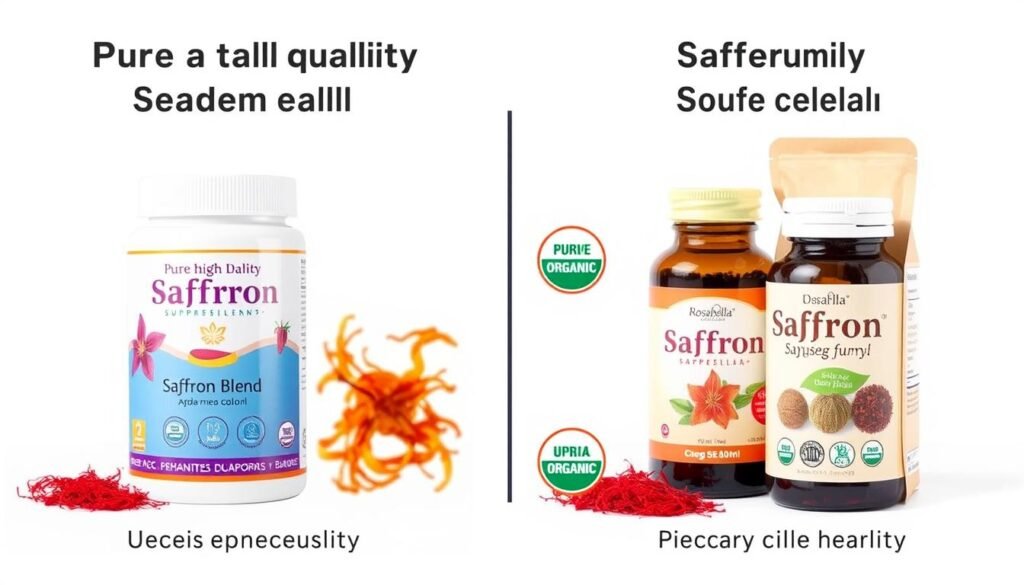
Pure, laboratory-tested saffron versus common adulterated products
The Purity Problem in Saffron Products
As with many valuable natural substances, the saffron market faces significant quality challenges. Being one of the world’s most expensive spices (often more costly than gold by weight), saffron is frequently adulterated or diluted to increase profits.
Many supplements labeled as “saffron” contain minimal amounts of the actual spice, mixed with cheaper herbs, colorants, or fillers. These practices not only reduce effectiveness but can potentially introduce unwanted compounds into your supplement regimen.
Why Laboratory Testing Matters
For saffron to deliver its potential benefits, especially for something as serious as cardiovascular health, purity and potency are non-negotiable. This is why independent laboratory testing is crucial when selecting a saffron supplement.
Proper testing verifies not only the identity of the saffron but also confirms the presence of the active compounds in therapeutic amounts. It also screens for contaminants, adulterants, and other substances that shouldn’t be present.
“The difference between premium, tested saffron and common market products is not just a matter of price—it’s a matter of whether you’re getting actual saffron compounds or merely paying for yellow-colored capsules.”
A Trusted Solution: Rosabella Saffron Blend
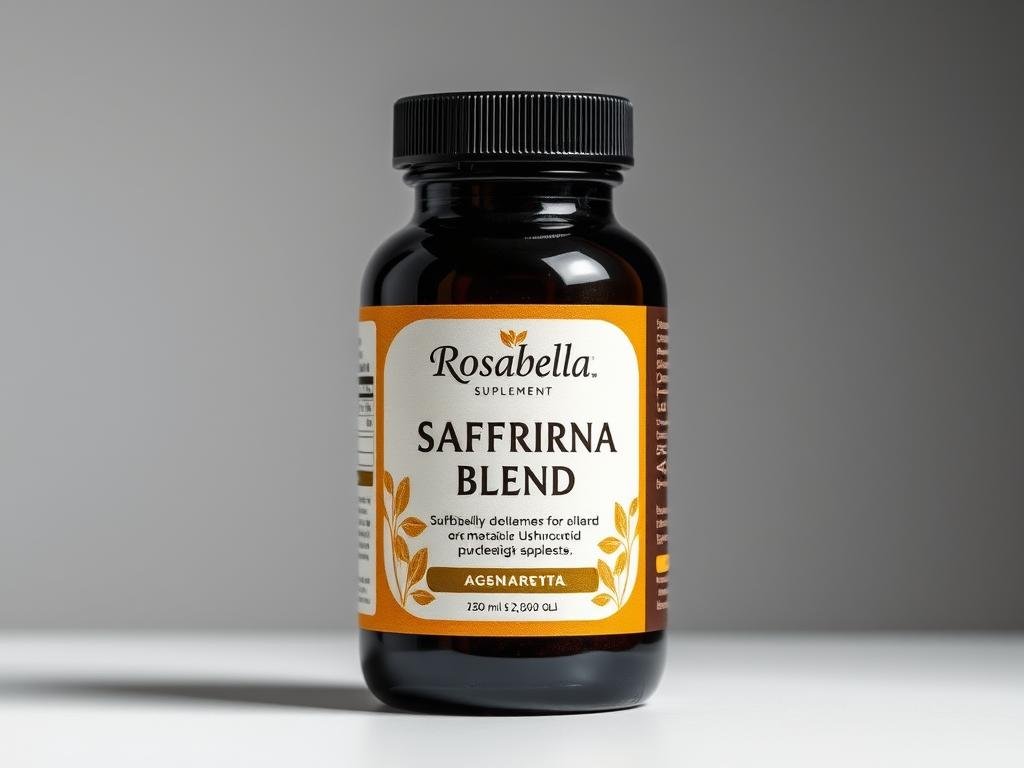
Rosabella Saffron Blend: 100% pure and organic saffron tested by independent laboratories
Support Your Arterial Health Naturally
After extensive research into saffron supplements, one product stands out for its exceptional quality and purity: Rosabella Saffron Blend. This small-batch supplement is produced by a company dedicated to maintaining the highest standards of purity and potency.
Unlike mass-market alternatives, Rosabella Saffron Blend contains 100% pure, organic saffron that has been independently tested by US laboratories to verify its composition and active compounds. Each batch is carefully processed to preserve the delicate bioactive components that make saffron so valuable.
Why Rosabella Stands Apart
In the crowded supplement market, Rosabella Saffron Blend distinguishes itself through several key factors:
Quality Assurance
- 100% pure saffron with no fillers or additives
- Organic certification ensuring no pesticide exposure
- Independent laboratory testing for purity verification
- Small-batch production for quality control
Formulation Benefits
- Optimized extraction process to preserve active compounds
- Balanced blend of saffron’s beneficial components
- Convenient daily dosing for consistent support
- Manufactured in FDA-registered facilities
Limited Availability Notice: Because Rosabella is produced by a small company committed to quality over quantity, their saffron blend frequently sells out. If you’re interested in trying this premium supplement, it’s recommended to secure your supply while it’s available.
A Comprehensive Approach to Arterial Health
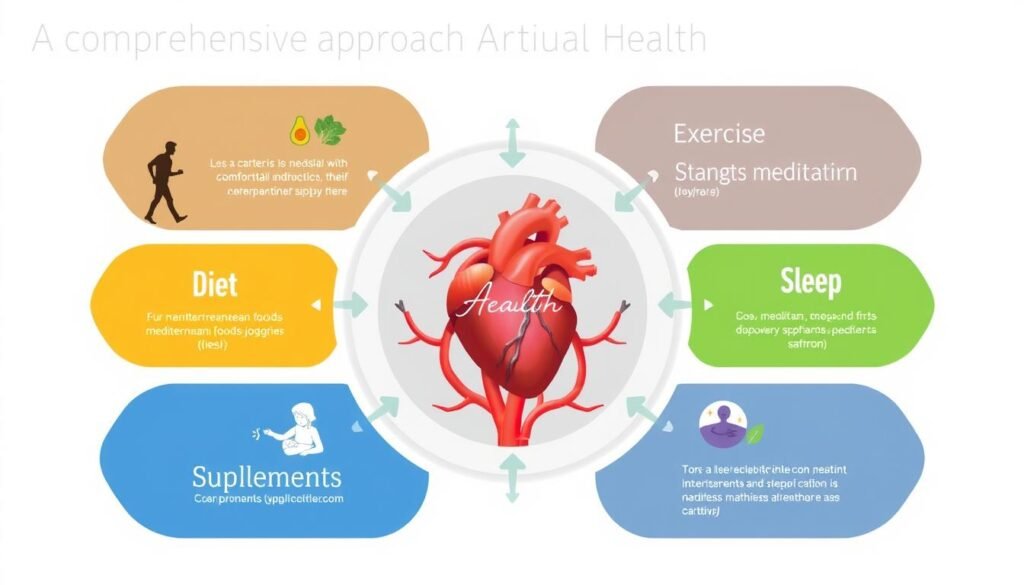
A multi-faceted approach to supporting arterial health and managing calcification
While Rosabella Saffron Blend offers valuable support for arterial health, it’s important to view it as part of a comprehensive approach. Consider these additional strategies to complement your saffron supplementation:
Supportive Lifestyle Practices
Diet Considerations
- Emphasize anti-inflammatory foods
- Include vitamin K2-rich foods (supports calcium metabolism)
- Consume adequate magnesium from green vegetables
- Stay properly hydrated throughout the day
Movement Patterns
- Regular, gentle cardiovascular exercise
- Practices that improve circulation like walking
- Flexibility exercises to support vascular health
- Consistent activity throughout the day
Stress Management
- Regular meditation or mindfulness practice
- Adequate sleep (7-8 hours nightly)
- Breathing exercises to support vascular function
- Maintaining social connections and purpose
Regular Monitoring
While addressing arterial calcification naturally, it’s still important to monitor your cardiovascular health with your healthcare provider. Regular blood pressure checks and appropriate cardiovascular screenings can help track your progress and identify any areas needing additional support.
Frequently Asked Questions About Arterial Calcification
How quickly does arterial calcification develop?
Arterial calcification typically develops slowly over decades. The process often begins in early adulthood but may not cause noticeable symptoms until middle age or later. This gradual progression is why it’s often called a “silent” condition—by the time symptoms appear, significant calcification may already be present.
Can arterial calcification be reversed?
Complete reversal of established arterial calcification is challenging with current medical approaches. However, emerging research suggests that progression can be slowed and, in some cases, modest regression may be possible through comprehensive approaches that include proper mineral balance, anti-inflammatory strategies, and targeted nutritional support like that found in high-quality saffron.
How long does it take to see benefits from saffron supplementation?
Most people report noticing general well-being improvements from quality saffron supplementation within 2-4 weeks of consistent use. However, cardiovascular benefits may take longer to manifest, as they involve more fundamental physiological processes. For optimal results, a 3-6 month consistent supplementation period is often recommended, alongside other supportive lifestyle practices.
Is Rosabella Saffron Blend safe to take with medications?
While saffron is generally well-tolerated, it’s always important to consult with your healthcare provider before adding any supplement to your regimen, especially if you’re taking prescription medications. This is particularly important for blood-thinning medications or antihypertensives, as there may be interactions. Your doctor can help determine the appropriate approach for your specific situation.
Taking Control of Your Arterial Health

Taking proactive steps toward better arterial health can lead to improved quality of life
Understanding arterial calcification as a primary driver of high blood pressure represents a paradigm shift in how we approach cardiovascular health. By looking beyond traditional explanations like salt and focusing on the actual structural changes occurring in your arteries, you gain the power to address the root cause rather than just managing symptoms.
The silent, progressive nature of arterial calcification makes proactive approaches essential. By the time symptoms appear, significant damage may already be present. This reality underscores the importance of supportive measures like Rosabella Saffron Blend, which offers natural compounds that have been valued for centuries for their cardiovascular benefits.
Support Your Heart’s Long-Term Health
Don’t wait until your arteries are already significantly calcified. Take a proactive step toward supporting your cardiovascular system with Rosabella Saffron Blend—the premium, laboratory-tested saffron supplement trusted for its exceptional purity and potency.
Remember that arterial health is a journey, not a destination. By combining quality supplementation with supportive lifestyle practices, you’re investing in your long-term well-being and quality of life. Your heart—and your entire cardiovascular system—will thank you for addressing the true hidden culprit behind high blood pressure.





